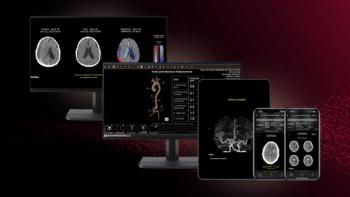
3D T2-Weighted Imaging Could Shorten Prostate MRI Protocols
Three-dimensional imaging could provide equivalent image quality to 2D acquisitions in T2-weighted imaging of the prostate at 3T.
Three-dimensional acquisitions provide equivalent image and lesion delineation quality, compared to 2D in T2-weighted imaging of the prostate, according to a study published in the journal
Researchers from Austria performed a prospective study to determine if 3D acquisitions could provide equivalent image quality, lesion delineation quality and PI-RADS v2 performance compared to 2D acquisitions in T2-weighted imaging of the prostate at 3 T.
One hundred fifty patients (mean age 63.7 years; mean PSA 7.2 ng/ml) participated in the study. Two uroradiologists independently rated image quality and lesion delineation quality using a five-point ordinal scale and assigned a PI-RADS score for 2D and 3D T2-weighted image data sets. Data were compared using visual grading characteristics (VGC) and receiver operating characteristics (ROC)/area under the curve (AUC) analysis.
The results demonstrated equivalent image and delineation quality, and PI-RADS v2 performance, compared to 2D in T2-weighted imaging of the prostate.
Reader 1/Reader 2
Image quality for 2D T2w
Mean score: 4.3 ± 0.81/Mean score:4.7 ± 0.83
Image quality for 3D T2w
Mean score: 4.3 ± 0.82/Mean score:4.7 ± 0.69
Lesion delineation for 2D T2w
4.16 ± 0.81/4.19 ± 0.92
Lesion delineation for 3D T2w
4.19 ± 0.94/4.27 ± 0.94
ROC analysis showed an equivalent performance for 2D (AUC 0.580–0.623) and 3D (AUC 0.576–0.629) T2w.
The researchers concluded that three-dimensional T2-weighted imaging could be used to considerably shorten prostate MRI protocols in clinical practice.
Newsletter
Stay at the forefront of radiology with the Diagnostic Imaging newsletter, delivering the latest news, clinical insights, and imaging advancements for today’s radiologists.



























